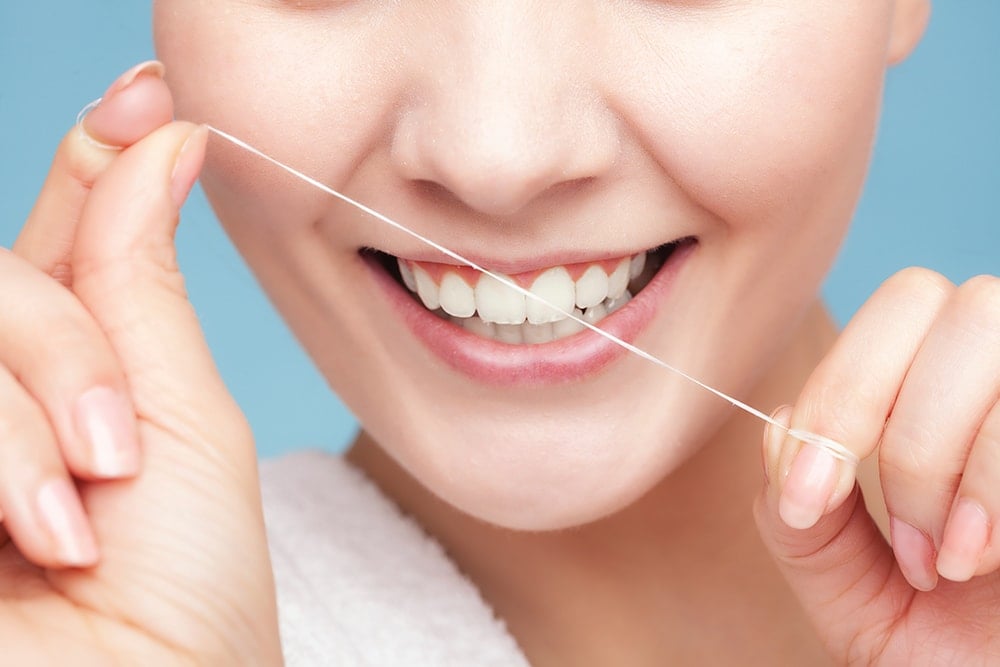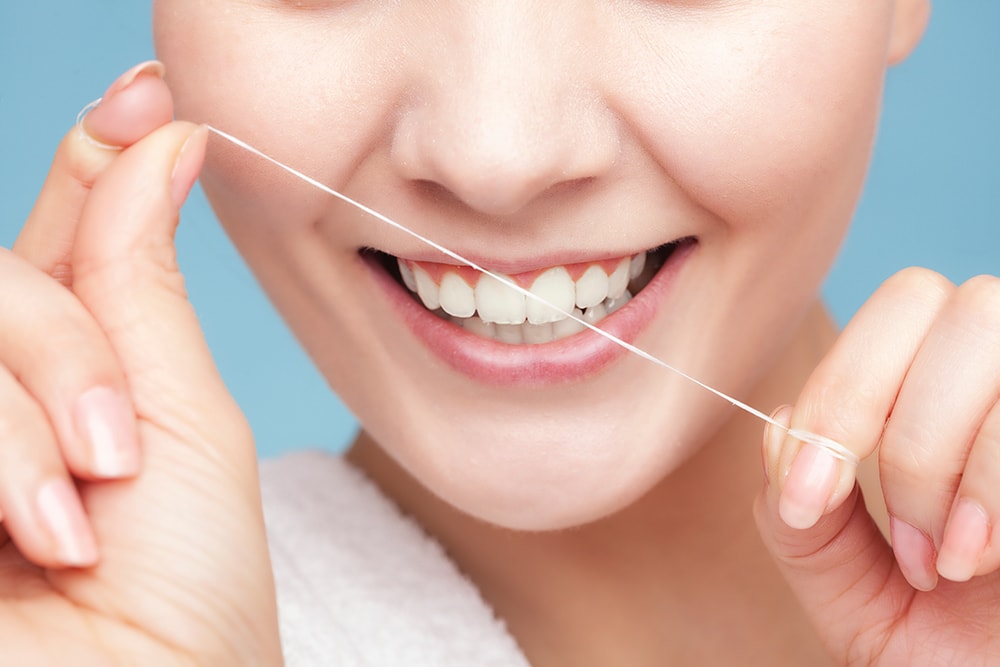What’s the best way to maintain good oral hygiene and prevent many common dental problems? If you said “brushing your teeth,” you’re half right. The other half, of course, is flossing. In fact, some dentists would say that flossing is even more important than brushing, since it not only cleans tooth surfaces, but also gets in between teeth and under the gum line. Regular flossing has been proven to remove plaque, the sticky bacterial film that’s responsible for tooth decay, gum disease, and many dental dilemmas.
The American Dental Association (ADA) recommends flossing every day—but many people don’t. Some feel they don’t have time to floss, or are confused about how to do it properly. Yet it doesn’t take a long time (or the arms of an octopus) to floss your teeth effectively. Here’s how to do it.
Flossing Techniques
There are two ways to hold floss in your fingers: the “loop” method and the “spool” method. Both work well, so you can use whichever one makes you more comfortable. Either way, you will start with a piece of floss about 18 inches long. Any type of dental floss is fine.
To start the loop method, tie a non-slip knot in the floss to make a circle. Put all of your fingers on both hands (except your thumbs) inside the floss, and pull them apart gently to make a taut circle. You can use your index fingers to move the floss between bottom teeth, and thumbs for the top teeth. After you finish flossing one area of your mouth, the floss will become soiled with plaque and food particles; now move your index fingers (or thumbs) to a clean part of the circle, and start flossing a new area.
To start the spool method, take the piece of floss and wind most of it loosely around the middle finger of one hand. Wind the rest around the other middle finger, and pull the fingers gently apart. You will use the thumbs and index fingers to guide the floss around the teeth. When the part you’re using becomes soiled, unspool some clean floss from the reserve, and wind up the dirty floss on the other finger.
Whichever method you use to hold and dispense floss, the cleaning motion is the same: Pull the floss snug against tooth surfaces (almost like a bowstring on an arrow), and work the floss up and down, from the chewing surface of the tooth to the part the lies below the gum line, and back. Do this for all of the tooth surfaces, including both sides of the spaces in between teeth.

Varieties of Floss
Today, you can find dental floss in many different styles and flavors. It’s available in waxed and unwaxed types, wide and regular widths, flavored and unflavored. While all work effectively, many people find they have a favorite variety.
Wide floss is sometimes preferred by people with wider spaces between teeth—or those with extensive bridgework. Waxed floss may slide more easily between teeth that are closely spaced—but it may not make the squeaky sound that the unwaxed type does when your teeth are clean, letting you know you’ve done a good job. And some enjoy the minty taste of flavored floss, while others prefer unflavored floss. Which one is right for you? Why not try a few of them and find out!
Why Floss?
Flossing is essential to your oral health because it helps remove harmful plaque bacteria from areas where your toothbrush simply can’t reach. These bacteria cause tooth decay (cavities) and gum disease—and if not cleared from tooth surfaces regularly, they harden into a tough coating called tartar (dental calculus), which must be removed via a professional cleaning. Daily flossing helps you avoid a myriad of dental problems; along with brushing and regular dental checkups and cleanings, it’s the best thing you can do for your teeth.

 Login
Login